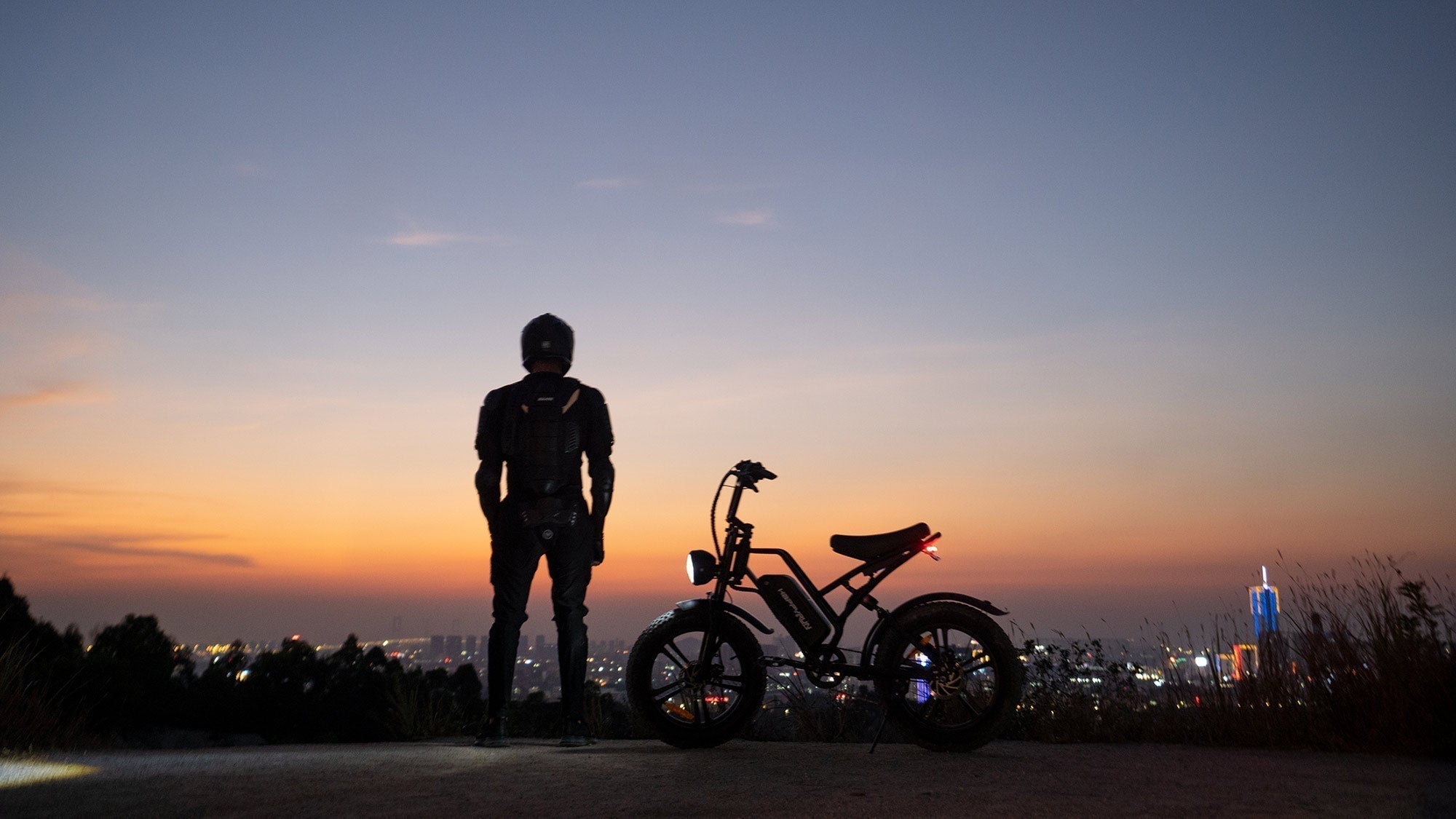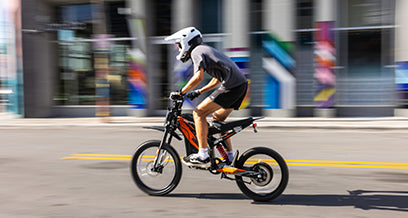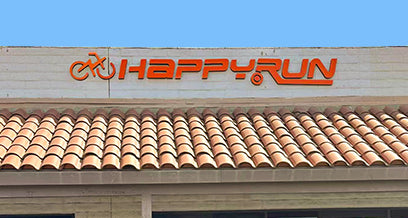
Why Hydraulic Brakes E-Bikes Are Expensive?
(and Why They Might Be Worth It)
Hydraulic brakes on e-bikes are generally more expensive due to their advanced technology, superior performance, and enhanced safety features. While they provide better stopping power and modulation compared to mechanical brakes, the complexity of their design and manufacturing contributes significantly to their higher cost.
E-bikes can come with two different types of disc brakes: engine automated devices, hydraulic and mechanical. In a hydraulic brake system, brake fluid is an oil-based fluid transmitted to the brake piston, and hence the brake is stopped. This applies only to the raised handlebars, which provide more control and enable the rider to stop the increased speed and weight of an e-bike. However, this new technology adds expense to the bike as opposed to the earlier mechanical disc brakes that use a cable just like their conventional bike brakes.
This piece is going to discuss e-bike hydraulic brakes in particular with both hydraulic brakes and mechanical disc brakes on display to inform you about their benefits. It will also give a comparative answer to why e-bike hydraulic brakes cost more.
Understanding The Difference Between Hydraulic brakes & Mechanical Brakes
Okay, what are e-bike hydraulic brakes and cable brakes now? E-bike Hydraulic brakes and mechanical disc brakes are two principal types of disc brakes favored in bicycle operation. Both are rotors (discs) mounted on the hub and use pads to break and as a result, regulate the speed of the wheels.
● Mechanical disc brakes: These employ a steel cable, which is similar to the rim brakes to link the brake lever to the caripar. Pushing a throttle bar by hand raises a wire that presses the brake pads against the disk.
● Hydraulic disc brakes: They work with a waterproof sealer of liquid. The application of force on the handle puts the fixed piston in the master cylinder under pressure that sends brake fluid to the caliper. The liquid transmitted through the cylinder tightly presses pistons on the caliper thus, creating pressure on the brake pads onto the discs.
What Are Hydraulic Brakes and How Do They Work?

Disk brakes employ the sealed fluid system that hydraulics depend on. Hydraulic brakes use a fluid-filled system to transmit force from the brake lever to the brake caliper, enhancing stopping power. When the lever is pulled, hydraulic fluid travels through lines to compress the caliper, which then pushes the brake pads against the rotor. The squeeze of the brake lever causes the piston of the master cylinder (front mechanism) to be pushed inward. This step forces the burning of brake fluid through the hose into the caliper (the brake unit at the wheel). Brake fluid will then push the pistons behind the caliper, which have the brake pads on which they press on the rotor (disc) that is connected to the wheel.
This fluid system is key. Unlike mechanical disc brakes that use a cable, the fluid allows much force to be transferred from your hand on the lever to the brake pads. This translates to superior stopping power with less effort required from you.
The benefit of the sealed system is that the brake fluid helps disperse heat more evenly. This reduces damage on the brakes, leading to a longer lifespan and ultimately, improved safety. This design allows for smoother, more controlled braking with less effort.
There is a drawback, though. Compared to mechanical brakes, hydraulic disc brakes are more expensive and require more regular repair because air bubbles or leaks can occasionally cause the sealed system to fail
Why Do Hydraulic Brakes Cost More Than Mechanical Brakes?
Hydraulic brakes cost more than mechanical brakes due to their advanced technology and components. The manufacturing process is more complex, requiring specialized materials and precision engineering. Additionally, maintenance for hydraulic systems often involves professional service, which can add to overall costs, making them a premium option for serious cyclists.
- Complexity: The hydraulic system requires precise engineering and additional components like hoses and fluid reservoirs, which increase production costs.
- Material Quality: Hydraulic systems often use higher-quality materials to withstand pressure and wear, further driving up costs.
- Installation: The installation process for hydraulic brakes is more intricate than for mechanical brakes, which can add to labor costs.
What Are the Advantages of Hydraulic Brakes for E-Bikes?
Hydraulic brakes offer several advantages for e-bikes, including superior stopping power and better modulation. They require less hand effort to engage, making them ideal for heavier e-bikes. Their self-adjusting nature reduces maintenance needs, ensuring consistent performance even in challenging conditions, which enhances rider safety and comfort.
- Superior Stopping Power: They provide more effective braking force, especially important for heavier e-bikes.
- Better Modulation: Riders can achieve finer control over braking, enhancing safety during descents or in wet conditions.
- Less Maintenance: Although they may be more expensive initially, hydraulic brakes often require less frequent maintenance than mechanical systems.
How Do Hydraulic Brakes Affect Overall E-Bike Pricing?
The inclusion of hydraulic brakes can significantly influence the overall pricing of an e-bike. Models equipped with hydraulic systems tend to be positioned in the mid-to-high price range due to their advanced features. This investment not only enhances performance but also contributes to a safer riding experience.
What Factors Contribute to the High Cost of Hydraulic Brake Systems?
Hydraulic brakes can significantly impact overall e-bike pricing, often adding $100 to $300 or more to the cost. E-bikes equipped with hydraulic braking systems are generally positioned as higher-end models due to their enhanced performance and reliability. This investment reflects the quality and safety benefits they provide for riders.
Several factors contribute to the high cost associated with hydraulic brake systems:
- Research and Development: Significant investment in R&D is required to develop effective hydraulic systems.
- Brand Reputation: Established brands that produce reliable hydraulic brakes often charge a premium for their products.
- Market Demand: As e-bikes grow in popularity, demand for high-performance components like hydraulic brakes increases, driving up prices.
How to Check Brake Pads and When to Change Them
You can keep your disc brakes in working order by checking and adjusting brakes daily. A reduction in braking force, screeching sounds made when braking or noticeably thin pad material are some warning indicators that may point to worn pads. You will need to take the wheels off to measure the thickness of your brake pads. Use pliers or your fingers to remove the inner brake pad by looking for a removal tab. Here's how to check brake pad wear: Verify the pad's thickness; if it is less than a nickel's width, it has to be changed right away. Everything thinner than a dime has to be corrected immediately. To replace the pads, reposition the new ones inside the caliper body using the same technique as to remove the old ones. It's imperative to keep your skin oils and fluids off of the new pads since this might impair stopping effectiveness. Remember to always refer to your owner's manual for specific instructions related to how to check brake pads and replace them for your brake model.
Buying Tips for E-Bikes with Hydraulic Brakes
When considering an e-bike with hydraulic brakes:
- Evaluate Your Riding Style: Determine if you need the enhanced performance that hydraulic brakes offer based on your riding conditions.
- Research Brands: Look for reputable brands like HappyRun, known for their quality e-bikes with reliable braking systems.
- Test Ride: If possible, test ride different models to experience how hydraulic brakes perform under various conditions.
E-Bike Expert Views
“E-bike safety is paramount, especially when descending or navigating urban environments,” says cycling expert Jane Smith. “Investing in hydraulic brakes can enhance your control and confidence while riding.” She emphasizes that while they may come at a higher price point, the benefits they provide justify the investment.
HappyRun Tank G60 E-Bike: Conquer Any Terrain with Confidence
The HappyRun Tank G60 electric bike boasts a range of features designed to take your off-road adventures to the next level. Here's a closer look at some of its key highlights:
Hydraulic Disc Brakes for Powerful Stopping
To ensure excellent performance and rider safety, Tank G60 features hydraulic brakes on its wheels specifically for driving on rough and gravel surfaces. This efficient and refined braking system differs from traditional cable-operated systems through the use of a sealed hydraulic line which delivers force from the brake lever to calipers. Already, the brake pads are simultaneously and closely sandwiched to the rotors by the flat edges on top of the piston, whose location one may already ascertain by the movement of the oil per piston. Hydraulic brakes on e-bikes have many benefits upon traditional mechanical disc brakes:
- Superior Stopping Power: The braking power of hydraulic brakes is substantially greater than that of cable brakes. This is especially important when you need to slow down rapidly on descents and inclement terrain.
- Smoother Lever Feel: While applying the e-bike hydraulic brakes, the hydraulic brake lever gives a soft and smooth feel compared to the cable disc brake.
- Reduced Maintenance: Because hydraulic brakes have a sealed system, dust, water, and filth are less prone to contaminate them. When compared to cable brakes, this lessens the requirement for frequent adjustments.
Conquer Any Terrain with Confidence
With its e-bike hydraulic brakes, Riding off-road gives you confidence when you are with the HappyRun Tank G60. The hydraulic brakes provide you with the exact and forceful stopping you need to safely negotiate difficult terrain, freeing you up to enjoy the ride.































Leave a comment